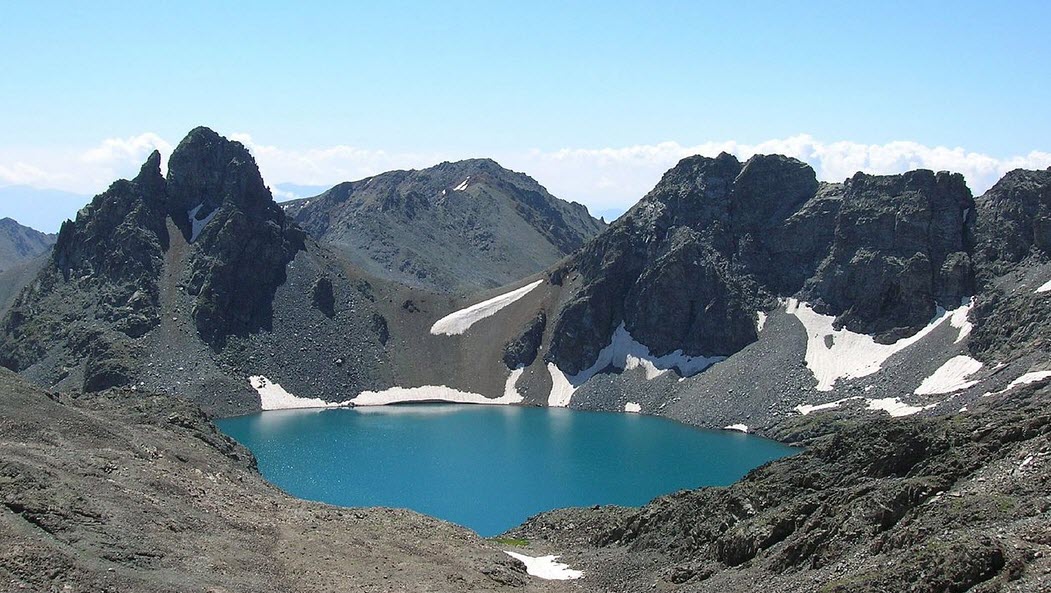Contents
The Karkaar Mountains, a mountain range situated in northern Somalia, stand as a testament to nature’s ability to craft landscapes of breathtaking beauty and geographical importance. Spanning the Puntland region, this range serves as a natural barrier between the coastal and interior lands. With its rugged terrain , endemic flora, and historical significance, the Karkaar Mountains are a treasure trove for nature enthusiasts and researchers alike.
Geographical Characteristics
Formation and Topography
Formed by tectonic activities millions of years ago, the Karkaar Mountains are composed of ancient rocks and feature rugged terrains with steep slopes. The range runs parallel to the Gulf of Aden coast, extending for approximately 200 kilometers. The highest peak, Shimbiris, stands at an altitude of 2,460 meters, making it the tallest point in Somalia.
Climate and Vegetation
The Karkaar Mountains have a distinct climate compared to the surrounding regions. With higher altitudes, they receive more rainfall than the arid lowlands of Somalia. This has resulted in a relatively lush landscape with juniper forests and a diverse array of endemic plant species, some of which are not found anywhere else in the world.
Historical and Cultural Significance
Prehistoric Settlements
The Karkaar Mountains have been a cradle of human habitation for thousands of years. Archaeological studies indicate the presence of prehistoric settlements, with cave paintings and ancient artifacts providing glimpses into the lives of early human societies.
Cultural Heritage
The mountains have also played a significant role in the cultural heritage of the Somali people. Traditional stories and folklore often reference the mountains, and they hold a special place in the collective consciousness of the communities living in the region.
Ecological Significance
Endemic Flora
The Karkaar Mountains are a hotspot for endemic flora. The relatively wetter climate compared to the surrounding arid regions has resulted in the growth of various plant species. Some of these plants, like the Frankincense tree, have significant cultural and economic value.
Wildlife Habitat
Although not as abundant as in other African regions, the Karkaar Mountains provide a habitat for a variety of wildlife. These include different bird species and small mammals. The range’s ecological diversity makes it a subject of interest for biologists and environmental researchers.
Economic Contributions
Gum and Resin Collection
One of the economic activities associated with the Karkaar Mountains is the collection of gums and resins from trees. These natural products are significant exports and contribute to the local as well as national economy.
Livestock Grazing
The foothills and the areas surrounding the Karkaar Mountains are utilized for livestock grazing. Nomadic pastoralism is a traditional way of life for many Somali people, and the mountains’ vegetation provides essential grazing grounds.
Potential for Tourism
Though not yet fully realized, there is potential for developing sustainable tourism in the Karkaar Mountains. The natural beauty and historical and cultural significance could attract nature lovers, trekkers, and cultural tourists.
In closing, the Karkaar Mountains are not just a geographical feature but also a repository of natural wealth, historical insights, and cultural heritage. As Somalia moves towards stability and development, there is hope that the true value of the Karkaar Mountains will be acknowledged and preserved. Their ecological diversity and rich cultural tapestry woven through centuries of history presents unique opportunities. Whether through sustainable tourism, conservation efforts, or educational research, these majestic mountains can serve as a cornerstone for regional progress.
Conservation and Sustainable Development
Protecting Ecological Diversity
For the Karkaar Mountains to realize their potential, it is imperative that conservation efforts be undertaken to protect the unique flora and fauna found in the region. Establishing protected areas, promoting reforestation, and monitoring the health of ecosystems could help maintain the ecological balance of the mountains.
Sustainable Economic Opportunities
Additionally, creating sustainable economic opportunities for the local communities is crucial. By promoting responsible harvesting of gums and resins, encouraging community-based tourism, and providing educational opportunities in environmental stewardship, the Karkaar Mountains can be a source of sustainable livelihood for the populace.
Education and Research
Facilitating educational and research initiatives focused on the Karkaar Mountains is equally important. Understanding the mountains’ geological, ecological, and historical aspects can contribute to informed decision-making in conservation and development. Encouraging collaborations between local communities, academic institutions, and environmental organizations could foster a culture of learning and preservation.
Embracing the Future with Respect for the Past
As Somalia embarks on a path of recovery and development, the Karkaar Mountains symbolise the nation’s innate wealth and cultural heritage. It is essential that future endeavours in the region be rooted in respect for the land and its histories. Through collaborative efforts that marry conservation with development, the Karkaar Mountains can shine as a beacon of hope and pride for not just Somalia, but for all those who appreciate the profound beauty and wisdom that nature holds.